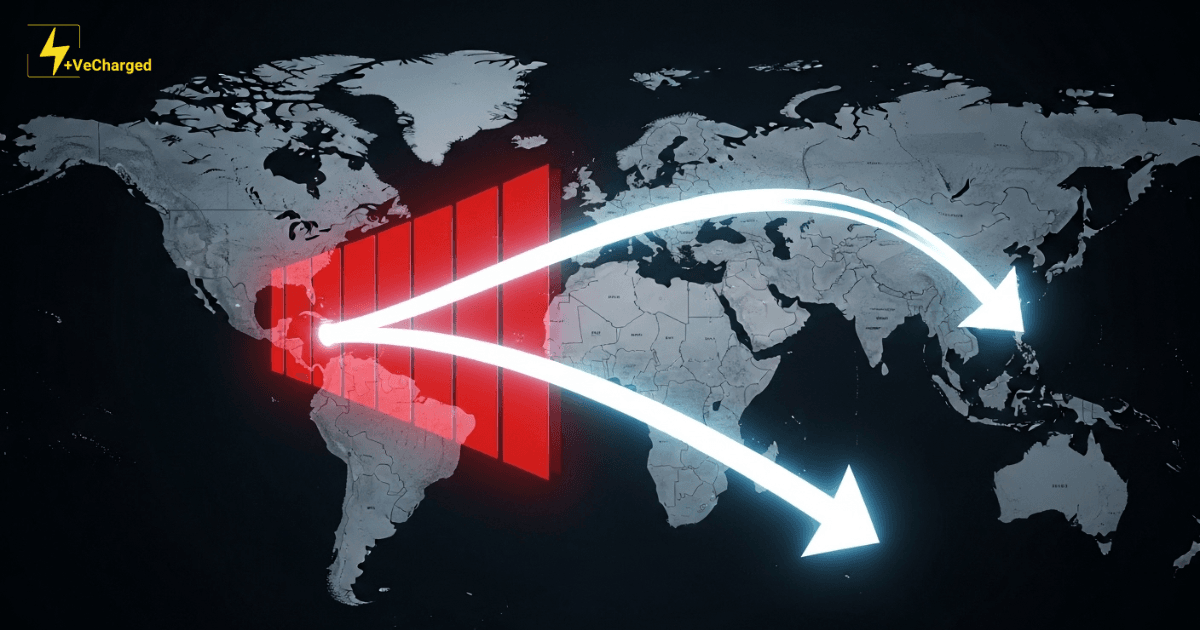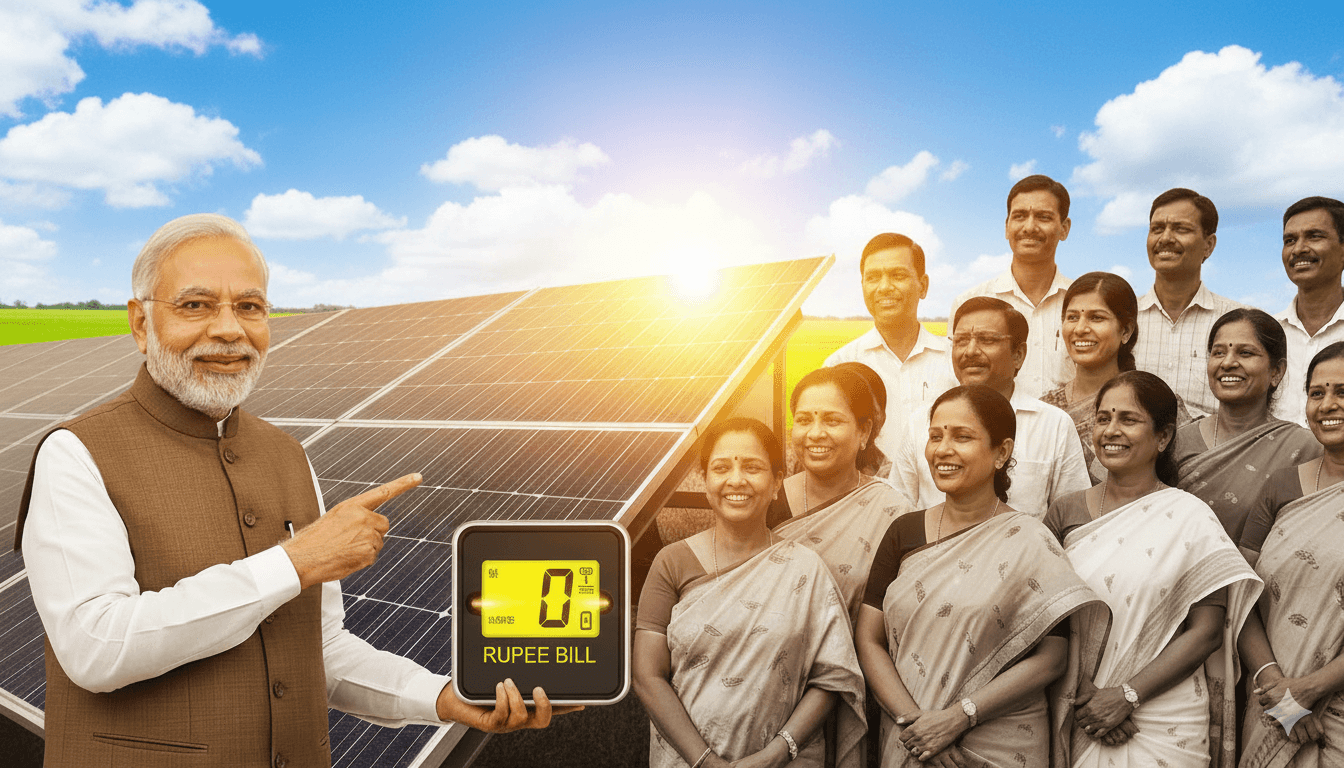With the lucrative US market facing new tariffs, India’s solar giants are being forced to pivot. Their new targets? Europe and the Middle East. Here’s a breakdown of the global chess game.
In the high-stakes world of global manufacturing, the game can change in an instant. For years, India’s solar industry has been on a meteoric rise, building a reputation as a key supplier of high-quality, cost-effective solar panels for the world. A huge part of that success was focused on one key customer: the United States.
But the board has been flipped.
With the looming threat of significant new tariffs from the US, the lucrative American market has suddenly become a minefield. As reported by the industry experts at Mercom India, a single policy change is now forcing a massive, strategic pivot from India’s solar giants.
They aren’t retreating. They are redirecting. This is the story of India’s “Plan B”—a calculated move to dominate new markets and reshape the global energy map.
The Core Problem: The American Wall
First, let’s be clear about the challenge. The US, in an effort to boost its own domestic manufacturing, has imposed and proposed a series of tariffs on imported solar modules.
- The Effect: These tariffs act as a tax, making it significantly more expensive for American installers to buy Indian-made panels. This has sent a shockwave through the Indian solar export industry, forcing them to look for new customers—fast.
The “Plan B”: India’s New Targets

Indian manufacturers are not waiting for the political winds to change. They are actively and aggressively moving into two key markets that are hungry for solar power:
1. Europe: The High-Quality, High-Value Market
- The Opportunity: The European Union has its own ambitious clean energy goals and is actively trying to diversify its supply chain away from an over-reliance on a single country. This is a perfect opening.
- The Vecharged Take: This is a smart, strategic move. Europe values the high-quality and ethically sourced manufacturing that has become a hallmark of the Indian solar industry. India is not competing on price alone; it’s competing on quality and reliability, which is a powerful differentiator.
2. The Middle East: The Sun-Drenched, Energy-Hungry Market
- The Opportunity: Nations like the UAE and Saudi Arabia are undergoing a massive energy transition, pouring billions into building some of the largest solar farms in the world. They need a staggering volume of panels, and India is perfectly positioned geographically to become their primary supplier.
- The Vecharged Take: This is a volume play. While Europe is about quality, the Middle East is about scale. By becoming the go-to partner for these giga-projects, Indian manufacturers can offset the volume lost from the US market.
The Hidden Advantage: “Made in India”
For years, the global solar market has been dominated by a single narrative. But a new story is emerging. India has a unique competitive advantage called the Approved List of Models and Manufacturers (ALMM). This is a strict, government-mandated quality control list.
Only the best, most reliable manufacturers get on this list. This has forced the entire Indian industry to level up its quality, creating a powerful “Made in India” brand that is now a major selling point in sophisticated markets like Europe.
What This Means for You (The Global Consumer)
This high-level chess game has real-world consequences:
- For US Buyers: You will likely see fewer Indian-made panels on the market and a stronger focus on “Made in America” brands.
- For European Buyers: You are about to get more choice. The influx of high-quality Indian modules will increase competition and could lead to more stable, or even lower, prices.
- The Big Picture: This is a sign of a healthy, maturing global market. An over-reliance on any single country for a critical technology is risky. The rise of India as a major, independent solar power is a positive step towards a more stable and resilient global energy supply.
Conclusion: A New World Order
The proposed US tariffs were not the end of the story for India’s solar industry; they were the beginning of a new chapter. By strategically pivoting to new, hungry markets, Indian manufacturers are not just surviving—they are expanding their influence.
This isn’t just a trade dispute; it’s the redrawing of the global energy map in real-time. And it’s a powerful reminder that the solar revolution is no longer dependent on a single country, but is now a truly global force.
Source / Citation:
Mercom India: https://www.mercomindia.com/indian-solar-exporters-eye-alternative-markets-post-trumps-50-tariff

Suhas Shrikant is the founder of Vecharged and an engineering enthusiast specializing in high-power off-grid solar systems. He has designed and built over a dozen custom systems and uses his hands-on, field-tested experience to create Vecharged’s expert guides and reviews.














